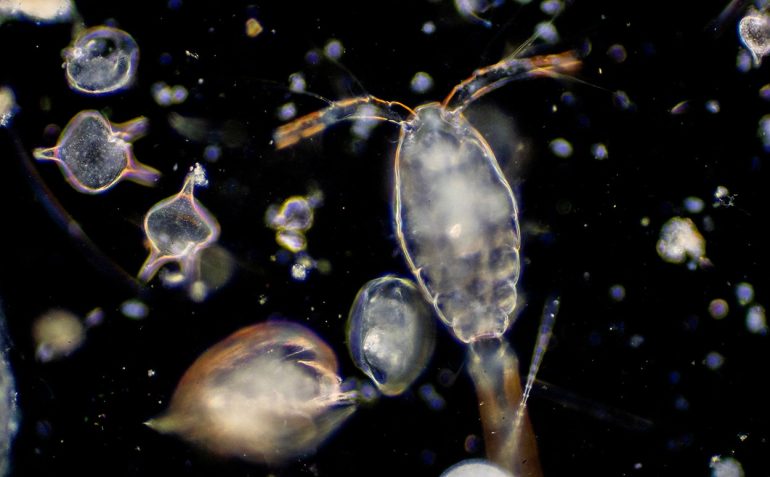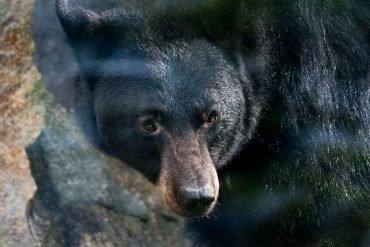The warming of the oceans means that the climatic zones in the ocean are changing. As a result, many marine organisms follow cooler waters and shift their distribution areas towards the poles. However, there are important differences, as scientists have now discovered. According to this, zooplankton may move more than phytoplankton and smaller species may benefit more than larger ones. This can lead to imbalances in the food chains.
Plankton – microscopic organisms that float in water – form the basis of marine food chains. Single-celled algae provide food for small planktonic animals, which in turn prey on fish and marine mammals. In addition, plankton also play an important role in the global carbon cycle. Plankton algae bind carbon dioxide from the air through photosynthesis. When they die, they sink to the ocean floor and the carbon bound in them is stored for a long time and withdrawn from circulation.
slide to pole
Since most plankton species are adapted to certain water temperatures, their distribution is affected by warming of the oceans. As regions of cooler water move toward the poles during climate change, ocean temperatures in the tropics rise to previously unusual values. Studies have long suggested that with this change in oceanic climate zones, plankton distribution is also changing and that many species are expanding their areas of distribution to higher latitudes. What is missing so far, however, is more precise data on which plankton groups react and how strongly they respond to climate change.
Fabio Benedetti of the Swiss Federal Institute of Technology in Zurich (ETH) and his colleagues have now examined this in more detail. To do this, they collected data on the distribution of 860 species of phyto- and zooplankton and, based on this, created distribution maps for today’s oceans and – with the help of a climate model – for oceans at the end of this century. Simulations initially confirmed that the distribution of plankton species would indeed shift towards the poles. “We are seeing a polar shift in species distribution at an average speed of 35 kilometers per decade,” the researchers report. Also, plankton species diversity is increasing overall as warmer waters favor greater diversity, as the team explains.
Zooplankton react differently than phytoplankton
But these changes also increase imbalances because not all plankton groups react equally to the warming of their habitats. In areas with water temperatures above 25 °C, the diversity of phytoplankton continues to increase, but in the case of zooplankton, the species thins out. “This may result in a slight decrease in zooplankton diversity in the tropics, but increases in temperate and subpolar latitudes,” Benedetti and colleagues report. “At these latitudes, approximately 40 percent of phyto- and zooplankton communities will be replaced by species that have migrated toward the pole,” the team reports.
However, this does mean that, especially in cold oceanic regions, there is an increasing number of plankton species that do not originally occur in the same habitat. As a result, their ecological relationships are also not coordinated with each other. “Polar wandering leads to a profound reorganization in the structure of plankton communities,” explained the researchers. “On the surface, species numbers will grow positively in some marine areas. However, increased diversity could seriously threaten established marine ecosystems and their functioning at high latitudes,” says Benedetti.
changing shape of plankton
There is another factor as well: closer examination of diatoms and copepods as two shell-bearing representatives of phyto- and zooplankton has shown that climate change affects small and large species differently. For smaller species, conditions get better as the ocean warms; For larger species, they tend to get worse. As a result, smaller plankton species are becoming more common and numerous, especially in temperate and high latitudes, while larger species are becoming rarer, as Benedetti and colleagues report. Such changes in plankton size would not only affect food webs, for example, fish yields in our latitudes, but also on the carbon cycle.
Larger shell-bearing plankton or animals are heavier and sink to the ocean floor more quickly after they die – and with them the carbon stored in their tissues. The excrement of such large planktonic animals is also usually larger and sinks rapidly. Since such large plankton organisms have so far lived mainly in the cold seas of polar latitudes, they contribute significantly to the rapid transfer of deep-sea carbon. But if they are replaced by smaller species during climate change, this transport slows down – and this has an impact on the carbon cycle. However, how strong this effect will be in the future is still unclear, as the scientists point out.
Sources: Swiss Federal Institute of Technology Zurich (ETH Zurich); Technical Articles: Nature Communications, doi:10.1038/s41467-021-25385-X

Web guru. Amateur thinker. Unapologetic problem solver. Zombie expert. Hipster-friendly travel geek. Social mediaholic.





